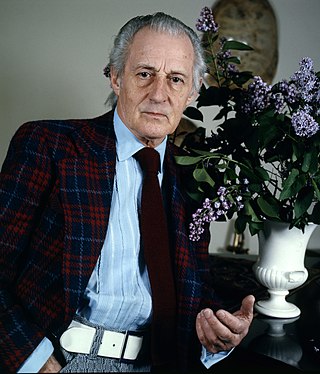
Sir Anton Dolin was an English ballet dancer and choreographer.

Vassily Grigorievich Voskresensky, usually referred to as Colonel Wassily de Basil, was a Russian ballet impresario.

George Zoritch, was a Russian-born American ballet dancer who starred in performances by Ballet Russe companies on stages all over the United States from the 1930s to the 1960s. Internationally known, he was one of the most glamorous figures and striking personalities in mid-twentieth-century ballet.

Tamara Toumanova was a Russian-born Georgian-American prima ballerina and actress. A child of exiles in Paris after the Russian Revolution of 1917, she made her debut at the age of 10 at the children's ballet of the Paris Opera.

Frederic Franklin, sometimes also called "Freddie", was a British-American ballet dancer, choreographer and director.

Dame Alicia Markova DBE was a British ballerina and a choreographer, director and teacher of classical ballet. Most noted for her career with Sergei Diaghilev's Ballets Russes and touring internationally, she was widely considered to be one of the greatest classical ballet dancers of the twentieth century. She was the first British dancer to become the principal dancer of a ballet company and, with Dame Margot Fonteyn, is one of only two English dancers to be recognised as a prima ballerina assoluta. Markova was a founder dancer of the Rambert Dance Company, The Royal Ballet and American Ballet Theatre, and was co-founder and director of the English National Ballet.
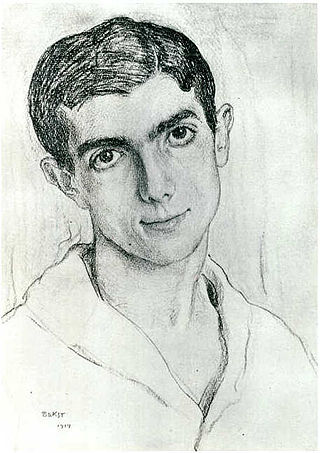
Leonid Fyodorovich Myasin, better known in the West by the French transliteration as Léonide Massine, was a Russian choreographer and ballet dancer. Massine created the world's first symphonic ballet, Les Présages, and many others in the same vein. Besides his "symphonic ballets," Massine choreographed many other popular works during his long career, some of which were serious and dramatic, and others lighthearted and romantic. He created some of his most famous roles in his own comic works, among them the Can-Can Dancer in La Boutique fantasque (1919), the Hussar in Le Beau Danube (1924), and, perhaps best known of all, the Peruvian in Gaîté Parisienne (1938). Today his oeuvre is represented by his son Lorca Massine, who stages his works around the world.

Rosella Hightower was an American ballerina and member of the Choctaw Nation. One of the Five Moons, she achieved fame in both the United States and Europe, and later enjoyed a career as an instructor and opera director.
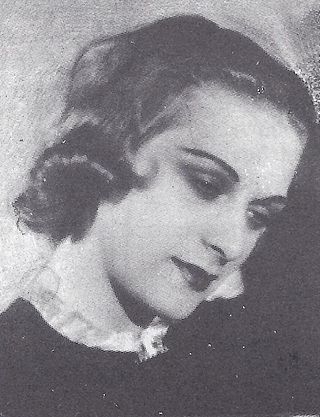
Mia Slavenska, née Čorak was a Croatian-American soloist of the Russian Ballet of Monte Carlo in 1938–1952 and 1954–1955.

Tatiana Mikhailovna Riabouchinska was a Russian American prima ballerina and teacher. Famous at age 14 as one of the three "Baby Ballerinas" of the Ballet Russe de Monte Carlo in the 1930s, she matured into an artist whom critics called "the most unusual dancer of her generation."
David Lichine was a Russian-American ballet dancer and choreographer. He had an international career as a performer, ballet master, and choreographer, staging works for many ballet companies and for several Hollywood film studios.

The Ballets Russes was an itinerant ballet company begun in Paris that performed between 1909 and 1929 throughout Europe and on tours to North and South America. The company never performed in Russia, where the Revolution disrupted society. After its initial Paris season, the company had no formal ties there.
Baby ballerinas is a term invented by the English writer and dance critic Arnold Haskell to describe three young dancers of the Ballets Russes de Monte-Carlo in the early 1930s: Irina Baronova (1919–2008), Tamara Toumanova (1919–1996), and Tatiana Riabouchinska (1917–2000).
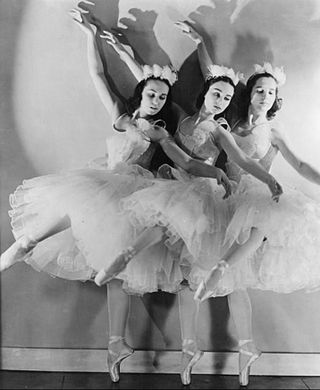
The company Ballets Russes de Monte-Carlo was formed in 1932 after the death of Sergei Diaghilev and the demise of Ballets Russes. Its director was Wassily de Basil, and its artistic director was René Blum. They fell out in 1936 and the company split. The part which de Basil retained went through two name changes before becoming the Original Ballet Russe. Blum founded Les Ballets de Monte Carlo, which changed its name to Ballet Russe de Monte Carlo when Léonide Massine became artistic director in 1938. It operated under this name until it disbanded some 20 years later.
The Original Ballet Russe was a ballet company established in 1931 by René Blum and Colonel Wassily de Basil as a successor to the Ballets Russes, founded in 1909 by Sergei Diaghilev. The company assumed the new name Original Ballet Russe after a split between de Basil and Blum. De Basil led the renamed company, while Blum and others founded a new company under the name Ballet Russe de Monte-Carlo. It was a large scale professional ballet company which toured extensively in Europe, Australia and New Zealand, the United States, and Central and South America. It closed down operations in 1947.
Myra Yvonne Chouteau was an American ballerina and one of the "Five Moons" or Native prima ballerinas of Oklahoma. She was the only child of Corbett Edward and Lucy Annette Chouteau. She was born March 7, 1929, in Fort Worth, Texas. In 1943, she became the youngest dancer ever accepted to the Ballet Russe de Monte-Carlo, where she worked for fourteen years. In 1962, she and her husband, Miguel Terekhov, founded the first fully accredited university dance program in the United States, the School of Dance at the University of Oklahoma. A member of the Shawnee Tribe, she also had French ancestry, the great-great-great-granddaughter of Maj. Jean Pierre Chouteau. From the Chouteau family of St. Louis, he established Oklahoma's oldest European-American settlement at the present site of Salina in 1796. She grew up in Vinita, Oklahoma.

Tamara Tchinarova, also known as Tamara Finch, was a Romanian-born émigré Russian and French ballerina who contributed significantly to the development of Australian dance companies and was a Russian/English interpreter for touring ballet companies. She was a dance writer and author, as Tamara Finch, of a number of non-fiction books. She was the first wife of actor Peter Finch.
Les Ballets 1933 was a ballet company started by Boris Kochno and George Balanchine, which Balanchine used to create new works that were completely his own, set to music that no one had yet choreographed. The company ran for less than four weeks in 1933 and tailored itself to small, wealthy audiences in Paris and London, but despite its scale, it came out with works that Balanchine later used to instruct at his School of American Ballet, and in the programs of his later companies. Outside a theatre for Les Ballets, Balanchine first met Lincoln Kirstein.

Nathalie "Natasha" Krassovska (1918–2005) was a Russian born prima ballerina and teacher of classical ballet most noted for her work with the Ballet Russe de Monte Carlo. Following her decades-long career, she moved to the U.S., where she founded the Krassovska Ballet Jeunesse. Krassovska taught, choreographed and performed until her death.
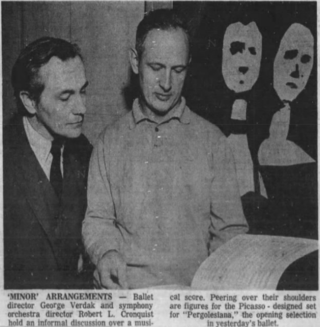
George C. Verdak was an American ballet dancer, teacher, and director. He is best known for dancing with the Ballet Russe de Monte Carlo and for his work as a faculty member at Butler University. Verdak was born in Chicago, Illinois, and danced with the Chicago Repertory Ballet after attending the Art Institute in Chicago. He danced with the Ballet Russe de Monte Carlo for nine years before its disbandment in 1952. He spent time in Minneapolis, Minnesota, teaching dance, performing, and choreographing for the St. Paul Civic Opera Company. Verdak began work at Butler University in 1959 where he was the chairman of the dance department and directed the Butler Ballet Company. He was also awarded an honorary doctorate by the university. Verdak founded the Indianapolis Ballet Theater where he created more than 100 ballets. His choreography and set work are still used today, and the George Verdak Trust provides sets and scenery for ballets around the United States.















